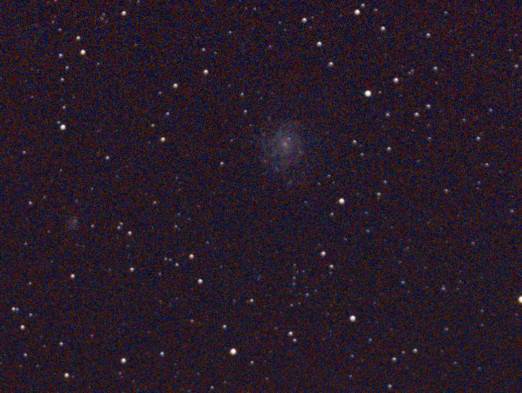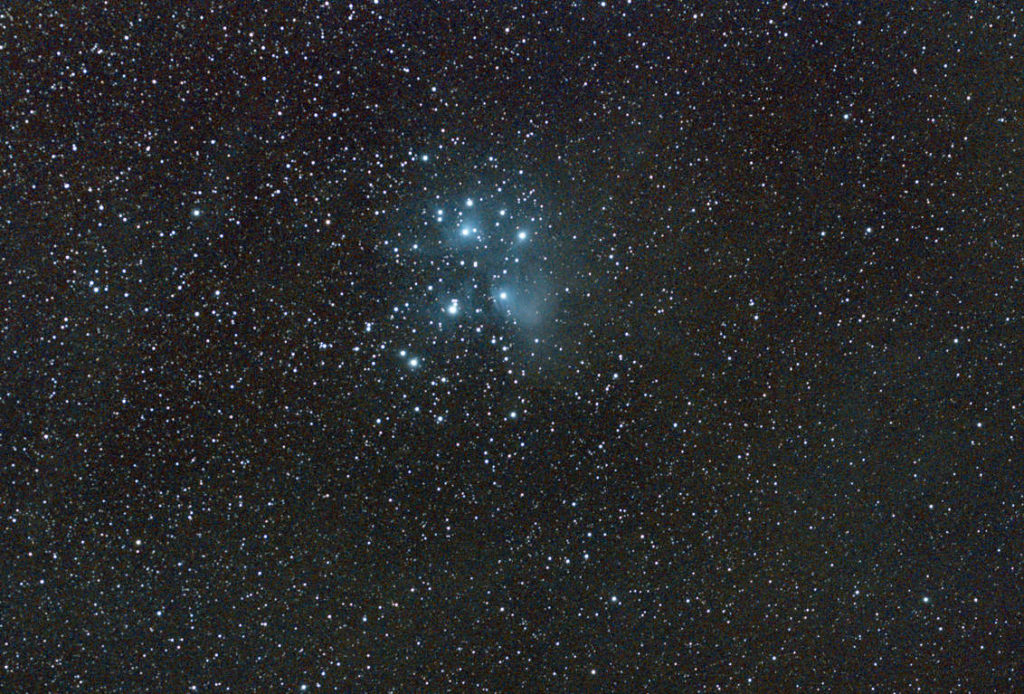
A Joy to Use
The nights are getting longer here in the North and the shooting conditions are really pleasant when the skies are clear. The temperature is cooler but very comfortable and the light breeze that rolls through carries a hint of warmness. My backyard has become my astrophotography lab and despite the heavy light pollution, it’s just nice to be able to step out at a moment’s notice to take some snaps. And this is exactly what I was able to do this evening in capturing the Pleiades cluster.
After messing about with the Samyang for a few days, I can say that this lens is a joy to photograph with. While this is an entirely manual lens, there is nothing difficult at all about using it. And the quality of the photos is really impressive – even without a lot of post-processing.
M101 2021/10/03 – Testing the Limits with the 135mm
A couple of days prior, I decided to try to capture M101, also known as the Pinwheel Galaxy in Ursa Major. I had very low expectations for this shoot but just wanted to see how far I could push this new lens. There were two primary challenges I discovered while seeking to capture this target.
Focusing: I wanted to shoot the galaxy with the aperture fully open at f/2. What I discovered is that focusing at this stop is really tight. What I mean by this is that the focus point is butted right up against the maximum infinity point of the focuser. To be honest, I’m not sure I can achieve perfect focus at this aperture so what I ended up doing was stopping down to f/2.8 to focus and then opened it back up.
Flats: I’m not sure what I’m doing wrong here, but I can’t seem to take flats at f/2. I’m getting an aggressive dark band across the top 1/4 of my exposure. My results after stacking are actually better when I don’t include the flats. Maybe I’m missing something, but to be fair, the non-flat stack ends up being pretty darn good.
Anyway, here is the result for M101 with a light post-process using only Siril. One thing you should be aware of, this is an extremely small target so even with a cropped 135mm focal length, it’s going to be really small in the photo. But you can begin to see its features! Mental note, M101 is best left for something with a little more powerful focal length.

Pleiades 2021/10/08 – The Seven Sisters
I had to wait until about 23:00 for the Pleiades cluster to be high enough in the sky to begin. It was kind of a drag to wait, but it gave me plenty of time to get set up. The goal tonight was to take about 500 photos at f/2 with 1-second exposures along with darks and flats.
Using APT made this shoot super easy and things were going well enough that I was able to take about 700 photos. Once again I was plagued by pretty horrible-looking flats, but the Pleiades were very centered in my frame so I knew I’d be able to get away with this after cropping the photo down. And I was right – here is the final lightly processed photo.

What’s not to like about this photo? I was amazed how the lens and camera picked up the blue hues of the Pleiades’ nebulae. Especially considering my Bortle 6 zone light pollution conditions. When I get to darker skies, this will definitely be a target I try again. There is just something peaceful and calming about this cluster.
Quite satisfying especially considering that I’m still just messing around with this lens at this point. But this is rapidly becoming my favorite lens. If anything, I’m a little bummed that I can’t plop this on the Lego Star Tracker. It’s just far too heavy to even attempt. But at some point, I’ll purchase a commercial tracker and I will be sure to revisit this target!
